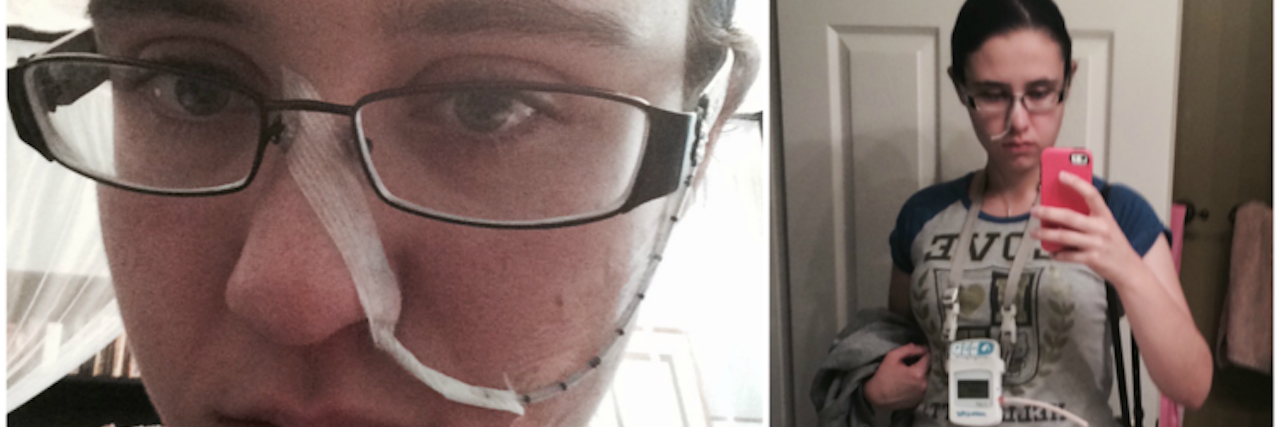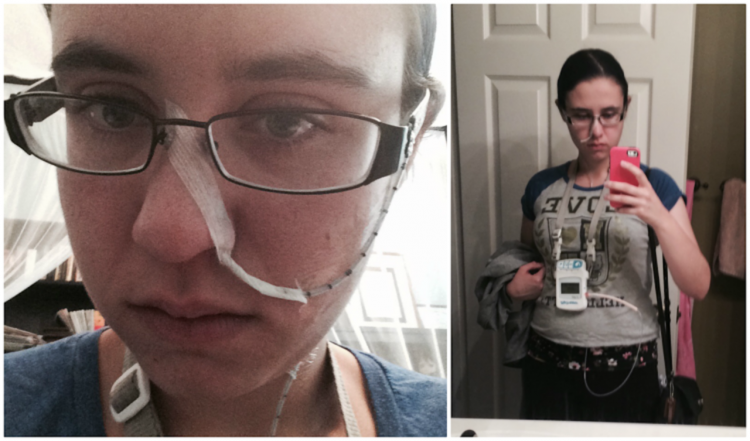In one of my previous pieces, I detailed what to expect during an esophageal manometry. A 24-hour pH study is commonly prescribed to help diagnose acid reflux, and it is often completed immediately following an esophageal manometry. While both an esophageal manometry and a 24-hour pH study involve inserting a probe through the patient’s nose and into the esophagus, there are some key differences between the two procedures. In this piece, I will outline what to expect when undergoing a 24-hour pH test, based off my own experience. It is important to remember that each hospital is different, so the test may be completed differently at other locations.
1. In the days before the procedure, you will likely be asked to stop taking any medications used to treat acid reflux, such as proton pump inhibitors (PPIs).
The 24-hour pH test is conducted to detect acid reflux episodes. You will likely be instructed by your doctor to stop taking medications – like PPIs, H2 blockers and prokinetics – that treat acid reflux. Taking these medications can cause the test results to show a false-negative. I had to go several days without taking my medications for acid reflux and gastroparesis. The number of days you will be asked to be off of these medications varies by hospital. While it can be frustrating to experience symptoms while off of reflux medication, it is important to follow the instructions given to you by your hospital to ensure accurate results.
2. At the start of the procedure, the probe will be inserted through a nostril and guided to the top of the throat. The probe will then be guided down the throat and into the esophagus.
Before inserting the probe, the technician will likely ask you if you have any conditions, such as a deviated septum, that could influence the ability of the probe to be inserted. The technician will choose a nostril to insert the probe into. The probe will be inserted into the nostril, through the sinus and to the back of the throat. This part was fairly easy for me to tolerate. The technician will then guide the probe down the esophagus. This part was harder for me to tolerate because the probe’s contact with the back of my throat triggered my gag reflex. The probe used in this procedure is very thin, however, so the probe insertion was much easier for me to tolerate than it was during my esophageal manometry. You will likely be asked to swallow while the probe is inserted into the esophagus to ensure that the probe does not go down the windpipe. You may be given a cup of water to drink to encourage you to swallow. Once the probe is fully inserted, it will be taped into place on your cheek and/or nose.
3. A portable pH monitor will be attached to the probe. You will have to carry it with you for the duration of the procedure.
The data collected by the probe will be stored on a portable monitor. I was able to wear the monitor around my neck like a necklace. You will need to keep the monitor with you for the duration of the procedure. You will likely be asked not to shower or bathe to protect the equipment. Changing clothing with the equipment on is more difficult than normal but doable.
4. You will be given a diary chart to fill out. You will likely be asked to track when you eat, when you lie down and when you experience symptoms of acid reflux.
The diary chart I was given had spaces for me to track when I experienced heartburn, when I experienced regurgitation, when I ate, when I lay down and when I slept. It is important to fill out the information the hospital asks of you. The diary chart is used to track your symptoms and correlate them with the results collected by the probe. By comparing the times you report symptoms with the times acid reflux is detected by the probe, your doctor will be able to determine if your symptoms correlate with actual acid reflux events.
5. You will likely be asked to go about your day normally, such as by eating foods you would normally eat.
Going about your day normally with the probe and monitor in place is easier said than done. The probe can irritate your throat and sinuses. Being off of your medication for acid reflux means you will probably experience reflux symptoms. Despite this, it is important to eat normally to ensure that the results are accurate. If you do not eat and do not experience as many acid reflux episodes as you normally do, the test results will not be an accurate representation of the severity of your symptoms. The results of this test are often used to make decisions about a patient’s plan of care, such as to decide if a patient needs surgery to control their acid reflux. Obtaining accurate results is important.
6. After the 24 hours have elapsed, you will return to your doctor’s office to have the probe removed. At this appointment, you will also turn in your diary chart.
In my experience, the technician pulled out the probe quickly and in one motion. I was able to tolerate the removal of the probe much better than I was able to tolerate the insertion. After the probe is removed and your diary chart has been turned in, your doctor will be able to interpret the results. The amount of time it takes to return the results varies by location.
While a 24-hour pH probing study can be difficult to tolerate, it is important to complete if your doctor wants to diagnose, or rule out, acid reflux. I was told how many acid reflux episodes I experienced and whether or not the reflux episodes correlated with the times I reported symptoms. I was also told that my DeMeester score, which measures acid reflux severity, was high enough to diagnose acid reflux.
This post originally appeared on Spoonie Musings.
We want to hear your story. Become a Mighty contributor here.


